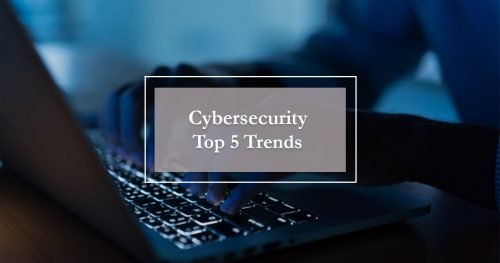5 Cybersecurity Trends in 2021 Your Organization Should Be Aware Of

At a global level, statistics show very grim consequences for organizations that do not take their cybersecurity seriously.
300%. This is the percentage representing the increase in cybercrimes since the pandemic.
6 months. This is the average time a data breach of any size may go undetected.
Due to rapidly growing digital transformation efforts and workforces continuing to work remotely due to the pandemic, the significance of cybersecurity is increasing manifolds.
To help you stay alert and protected, here are five important cybersecurity trends you need to be aware of in 2021.
1) Ransomware is Gaining Momentum
Ransomware attackers are becoming more dangerous. Not only are their demands increasing, but they’re also seeking leverage to ensure organizations pay up.
One type of attack is especially becoming popular at an alarming pace: Data Exfiltration. This type of attack entails extracting usernames, passwords, and personal finance information. Since having such data in a cybercriminal’s hands is incredibly damaging, the ransom can be quite high.
What’s scarier is that many cybercriminals don’t hold up their end of the bargain. They release data despite receiving their ransoms. Therefore, your organization needs to be proactive while protecting its data.
2) Companies will be Vulnerable Considering the Lack of Trained Cybersecurity Professionals
The cybersecurity talent shortage is more prominent than ever. In fact, experts believe it reached the “danger level”. This is because it takes 21% longer to fill cybersecurity roles than any other IT job.
While many organizations consider outsourcing this task, in-house professionals offer the highest ROI on the long run. This is especially true due to the growing number of cybersecurity threats that can impact an enterprise.
Therefore, organizations need to enroll their employees in cybersecurity training courses. Doing so will further develop a stronger culture of cybersecurity, satisfy clients and shareholders, and reduce (if not eliminate) the stress of data breaches.
3) Mobile Threat Defense Adoption Will Increase
Shadow IT, i.e. the use of IT-related hardware or software without the knowledge of an organization’s IT or security professionals, has been at its peak since the pandemic. Especially because employees access emails from home via mobile devices.
While organizations took several measures to secure their data and practices, mobile-targeted cyber-espionage became a major concern. That’s why one of the cyber security technology trends for this year is prioritizing MTD, or Mobile Threat Defense.
MTD offers sophisticated protection against cyber threats targeted at mobile devices. It’s applied to devices, networks, and applications to thwart attacks, provide visibility into the risks of the workforce, and secure sensitive data regardless of where it sits.
4) Organizations Will Go Towards Extended Detection and Response (XDR)
With the workforce working beyond the office perimeters, organizations aren’t cutting any costs to secure their personnel and the sensitive data they work with. One investment many are seriously considering is Extended detection and response (XDR).
XDR offers organizations visibility into data across networks, clouds, and applications. At the same time, this system detects, analyzes, and remediates threats.
Using this system, security teams can focus on threats and eliminate them before their impacts grow more severe. In fact, CISCO’s XDR claims to shorten the time spent on threat hunting by 72%, reduce response time by 6-10 hours, and ensure 100% visibility.
5) Consumers Will Grow More Interested in Privacy
Consumers have been learning about privacy, especially since news of data breaches tend to circulate quickly via social media. Several incidents have further shown that most basic security measures are overlooked, and security processes are lacking.
Therefore, organizations need to address existing vulnerabilities related to consumer privacy before an attack proves how vulnerable they are.
For instance, organizations can become ISO 27701 certified or have their employees earn its related individual certification. ISO 27701 is the privacy information standard which provides guidance on implementing, maintaining, and improving a Privacy Information Management System (PIMS).
Make the Necessary Cybersecurity Changes Right Away!
As 2021 is expected to be anything but predictable, you can’t afford to sit on the sidelines and pray an attack doesn’t target your organization. You need to formulate a cybersecurity plan with these cyber security trends in mind and be proactive.
Need help training your staff on cybersecurity? LearningCert can help train your workforce on important information security certifications. Whether you wish to train employees individually or within a group, contact our Training Advisors to discuss your training needs.




